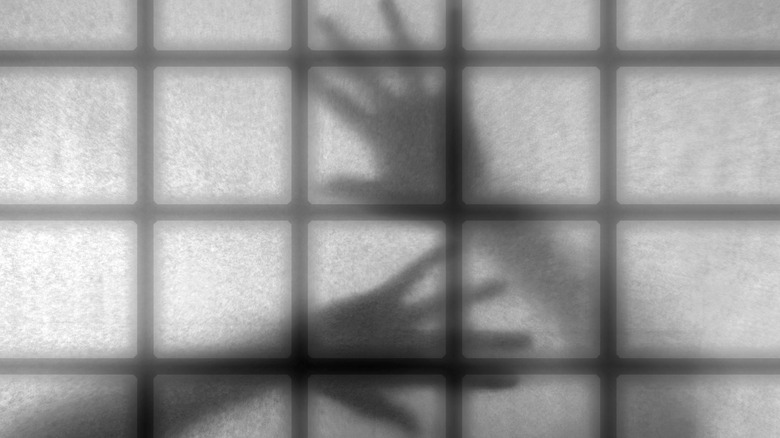The History Of White Torture As A Punishment Method
Evin Prison, located in Tehran, Iran, has been a political penitentiary since 1972. The inmates there consist of activists, artists, writers, and intellectuals who are subjected to abuse and torture. In August 2021, Amnesty International released a statement regarding the condition within the prison walls as seen in leaked surveillance footage, saying, "It is shocking to see what goes on inside the walls of Evin prison, but sadly the abuse depicted in these leaded video clips is just the tip of the iceberg of Iran's torture epidemic."
One of the forms of punishment used in Evin is white torture — an extreme form of solitary confinement used on prisoners in order to push them to sign confessions, break their resolve, or give out important information. White torture involves confining an inmate in an all-white room to deprive all the senses. The floors, bed, clothing, lights, and even the food is white. According to Emadion, lights are positioned in specific locations to avoid casting shadows. The room is also soundproof so no amount of noise can be heard. The food served to the prisoner is white rice — which is unseasoned — in order to deprive the person's senses of smell and taste.
Initially, white torture doesn't seem to be so bad. However, when the senses are deprived for long periods of time, the prisoner can experience adverse side effects that may be permanent and destructive.
The study of sensory deprivation
Canadian psychologist Donald Hebb conducted a study on sensory deprivation that he published in 1949 in the book titled "The Organization of Behavior." He had already experimented with visual deprivation on rats, and he was able to get a grant to finance a study on humans. Hebb paid volunteers — which mostly consisted of college students — $20 daily to participate in a sensory deprivation study that took place at McGill University Medical Center in Montreal, Canada (via BBC).
The subjects were placed in individual rooms and deprived of their senses. They wore goggles and earphones to strip them of sight and hearing, and they also had cardboards on their arms and gloves on their hands to diminish their sense of touch. The study was supposed to last six weeks, but most of the subjects could only last a few days. One of Hebb's partners in the study, Woodburn Heron, wrote, "Nearly all of them reported that the most striking thing about the experience was that they were unable to think clearly about anything for any length of time and that their thought processes seemed to be affected in other ways," as reported by Mother Jones. After coming out of isolation, the test subjects underwent cognitive tests that showed they were temporarily mentally impaired.
The white torture experience
Amir Fakhravar was a prisoner in Evin Prison who was subjected to white torture. In an interview with CNN, Fakhravar detailed his experience. "We didn't see any color, all of the cell was white, the floor was white, our clothes were white and also the light, 24 hours, was white," he said. If prisoners needed to use the toilet, they would slip a white piece of paper under the door and be escorted by guards with padded shoes to avoid making noise. Fakhravar endured isolation in the white room for eight months, and by the time he got out, he said he couldn't remember the faces of his parents. "When they released me from that prison, I was not a normal person," he said.
Another prisoner who was a writer also shared his experience in the white room. "They get what they want without having to hit you," he said, adding that officials know details about prisoners that they can use to get what they want. "You begin to break. And once you break, they have control. And then you begin to confess," he explained, per Human Rights Watch. For some, this no-contact form of torture is worse than being physically punished, as humans are naturally social creatures. When a person is isolated and senses are deprived, psychological problems tend to develop, and those who experience this type of punishment usually go through mental anguish long after they have been released from prison.


